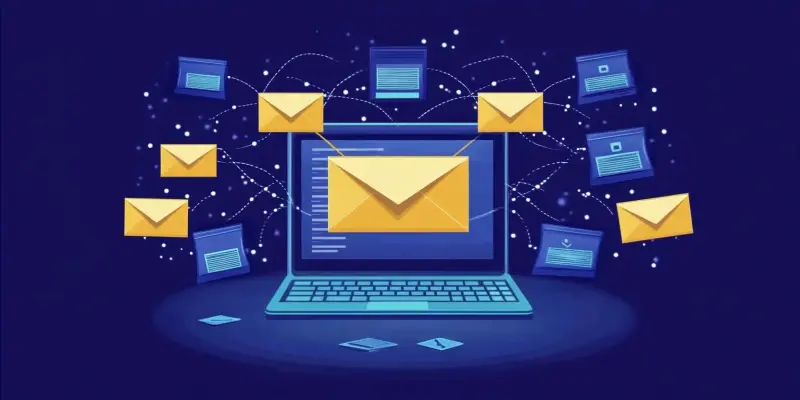In an age where digital communication is critical, protecting email accounts from ransomware schemes is more essential than ever. Since its initial identification, the Medusa ransomware scheme has increasingly targeted email users, leading to a significant surge in cyber threats. This article will provide valuable guidance on protecting email accounts from the Medusa ransomware scheme, ensuring personal data remains secure.
Obtain Reliable Anti-Malware Software, and Ensure Your Phone and Computer Are Up-to-Date
Ensuring that devices are equipped with reputable anti-malware software is a fundamental step in defense against ransomware. This software can detect, quarantine, and remove threats before they cause damage. It is essential for users to download software from trusted vendors and regularly check for updates. In addition, keeping the operating systems of phones and computers up-to-date is crucial. These updates usually include security patches that address vulnerabilities, thereby reducing the chances of exploitation by ransomware like Medusa. Updates also enhance system stability and performance, making devices less prone to malware attacks. Sometimes, outdated software can introduce multiple security gaps that hackers can exploit effortlessly. Therefore, enabling automatic updates or setting reminders to check for updates manually ensures the constant protection of systems. Users must also be vigilant about updating all installed applications to close any potential security loopholes commonly targeted by cybercriminals.
Verify for Alternative Spellings of Companies on Websites and Addresses
Phishing attacks often employ deceptive websites and email addresses that appear remarkably similar to legitimate ones. A common tactic of Medusa ransomware involves exploiting these misleading websites to entice victims into disclosing their sensitive information. Ensuring that the website’s URL and email address have the correct spelling and domain before engaging can prevent falling into such traps. Cybercriminals often alter one or two characters in the URL or email address to trick users. As a preventive measure, users should develop the habit of scrutinizing URLs and email addresses before clicking on them. This involves verifying the spelling and ensuring that legitimate domains are being accessed. Implementing domain filters or using browser extensions that authenticate websites can add an extra layer of protection against these deceptive sites. Remember, being cautious at the preliminary stages can avert significant threats and prevent substantial data breaches.
If You Don’t Recognize an Email, Just Erase It
Many ransomware attacks originate from unsolicited emails containing malicious attachments or links. A primary defense mechanism is to delete any email from an unrecognized sender immediately. Erasing suspicious emails ensures that users do not inadvertently open malicious attachments, which could install ransomware on their systems. Often, these emails are cleverly crafted to provoke curiosity or evoke urgency, compelling users to interact with them. Furthermore, email users should avoid downloading attachments or clicking on links from unknown sources. Disabling the automatic download of content in emails can prevent accidental exposure to hidden ransomware. Instead of interacting with suspicious email content, reporting such instances to the email service provider or the concerned authority can help in mitigating the threat. Implementing these practices creates an initial barrier to ransomware attacks facilitated through phishing emails.
Backup Your Important Data to an External Hard Drive
Regularly backing up crucial data to an external hard drive provides a safety net in the event of a ransomware attack. This measure ensures that even if ransomware encrypts original data, users can restore their information from the backup without succumbing to the attackers’ demands. Using an external hard drive specifically for backups keeps data offline and out of the reach of ransomware. Establishing a consistent backup schedule, whether daily, weekly, or monthly, depending on the importance of the data, can significantly minimize data loss. Using encryption for backups can add an additional security layer to safeguard sensitive information. Storing backups in multiple locations or utilizing cloud storage services as secondary backup options can further enhance data security. Overall, regular and secure backups serve as both a preventive and recovery mechanism against ransomware threats.
Alter Your Password and Make It Strong
Passwords serve as the first line of defense against unauthorized access to email accounts. A robust password, comprising at least 22 characters, integrating a mix of uppercase and lowercase letters, numbers, and special characters, can thwart cybercriminals from easily guessing or brute-forcing access. Frequently updating passwords, ideally every three months, can prevent unauthorized access even if credentials are compromised. Avoiding predictable patterns, such as birthdays, names, or simple sequences, can enhance password complexity. Utilizing password managers can help users generate and store strong, unique passwords for each account, reducing the risk associated with password reuse. Implementing these recommendations can significantly bolster email account security against ransomware and other cyber threats.
Utilize Multi-Factor Authentication
In today’s digital age, safeguarding email accounts from ransomware attacks has never been more crucial. The Medusa ransomware, first detected some time ago, has increasingly targeted email users, causing a significant rise in cyber threats. This escalation underscores the importance of securing personal data against such schemes. This article aims to offer invaluable advice on how to protect your email accounts from the Medusa ransomware, ensuring your sensitive information stays safe from hackers. Given the advanced nature of these threats, understanding how to effectively guard against them is vital. Strengthening email security involves a blend of best practices: using strong, unique passwords and enabling multi-factor authentication. Regularly updating security software and being cautious of suspicious emails or links can also help fortify your defenses. By integrating these protective measures, you can significantly reduce the risk of falling victim to ransomware schemes like Medusa, keeping your personal data secure in an increasingly vulnerable digital world.

